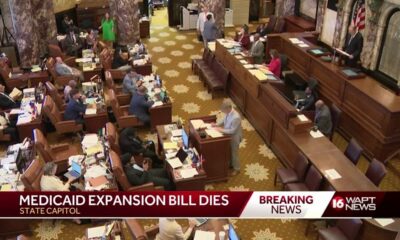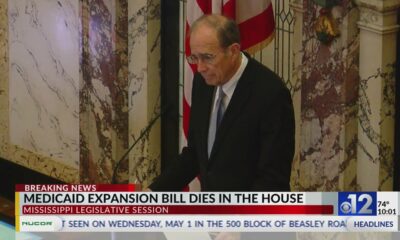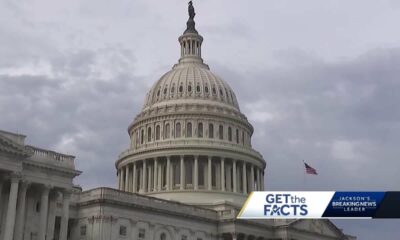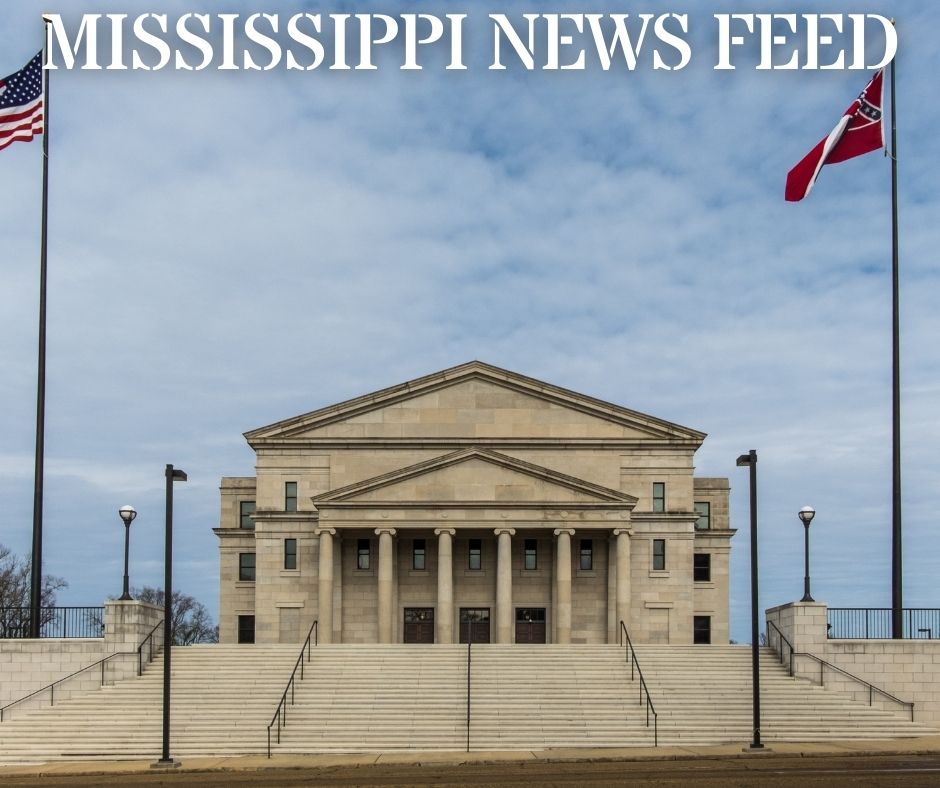Kaiser Health News
Biden Is Right About $35 Insulin Cap but Exaggerates Prior Costs for Medicare Enrollees
Samantha Putterman, PolitiFact
Fri, 05 Apr 2024 09:00:00 +0000
Insulin for Medicare beneficiaries “was costing 400 bucks a month on average. It now costs $35 a month.”
President Joe Biden, in a March 22 speech
The cost of insulin in the United States has risen considerably in recent years, with some estimates finding that Americans have paid around 10 times as much for the drug as people in other developed countries.
But recent changes by the federal government and drug manufacturers have started to drive insulin prices down, something President Joe Biden often mentions at campaign events.
Biden told the crowd at a March 19 campaign reception in Reno, Nevada, that he's fought for years to allow Medicare to negotiate with drug companies.
“How many of you know someone who needs insulin?” Biden asked. “OK, well, guess what? It was costing 400 bucks a month on average. It now costs $35 a month.”
We've heard Biden make this point several times on the campaign trail — in other instances, he has said beneficiaries were paying “as much as” $400 a month — so we wanted to look into it.
The Inflation Reduction Act, which Biden signed in 2022, caps out-of-pocket insulin costs at $35 a month for Medicare enrollees. The cap took effect in 2023. In response, three drug manufacturers said they planned to reduce the price of insulin to $35 through price caps or savings programs.
The legislation also helped patients by clarifying how much they would have to pay for insulin and other drugs.
But Biden overstated the average monthly cost that Medicare beneficiaries were paying before the law.
One government estimate for out-of-pocket insulin costs found that people with diabetes enrolled in Medicare or private insurance paid an average of $452 a year — not a month, as Biden said. That's according to a December 2022 report by the Department of Health and Human Services using 2019 data. Uninsured users, however, paid more than twice as much on average for the drug, or about $996 annually.
About Half of US Insulin Users Are on Medicare
More than 37 million Americans have diabetes, and more than 7 million of them need insulin to control their blood sugar levels and prevent dangerous complications. Of the Americans who take the drug, about 52% are on Medicare.
It's unlikely that many Medicare enrollees were paying the $400 out-of-pocket monthly average Biden referred to, though it could be on target for some people, especially if they're uninsured, drug pricing experts told us.
“It would be more accurate to say that it could cost people on Medicare over $400 for a month of insulin, but the average cost would have been quite a bit lower than $400 on Medicare,” said Stacie Dusetzina, a health policy professor at Vanderbilt University School of Medicine.
Medicare Part D, also called the Medicare prescription drug benefit, helps beneficiaries pay for self-administered prescriptions. The benefit has several phases, including a deductible, an initial coverage phase, a coverage gap phase, and catastrophic coverage. What Medicare beneficiaries pay for their prescriptions often depends on which phase they're in.
“It is confusing, because the amount that a person was supposed to pay jumps around a lot in the Part D benefit,” Dusetzina said. For example, she said, Medicare beneficiaries would be more likely to pay $400 a month for insulin during months when they hadn't yet met their deductible.
Mariana Socal, an associate scientist at Johns Hopkins Bloomberg School of Public Health, said it's also difficult to estimate insulin's precise cost under Medicare because individual prices hinge on other factors, such as how many other prescription medications patients take.
“Because the Medicare program has multiple instances where the patient is required to pay a coinsurance (percentage of the drug's cost) to get their drug, it is very likely that patients were paying much more than $35 per month, on average, before the cap established by the Inflation Reduction Act went into effect,” Socal wrote in an email.
There are different ways to administer insulin, including through a pump, inhaler, or pen injector filled with the medicine.
In a 2023 report, HHS researchers estimated that about 37% of insulin fills for Medicare enrollees cost patients more than $35, and 24% of fills exceeded $70. Nationally, the average out-of-pocket cost for insulin was $58 per fill, typically for a 30-day supply, the report found. Patients with private insurance or Medicare paid about $63 per fill, on average.
For people with employer-sponsored insurance, the average monthly out-of-pocket spending on insulin in 2019 was $82, according to a report published in October 2021 by the Health Care Cost Institute, a nonprofit that studies health care prices. The study found that the majority of patients were spending an average of $35 a month, or lower, on the drug. But among the “8.7% of individuals in the highest spending category,” the median monthly out-of-pocket spending on insulin was about $315, the study said.
Our Ruling
Biden said Medicare beneficiaries used to pay an average of $400 per month for insulin and are now paying $35 per month.
The Inflation Reduction Act capped the monthly price of insulin at $35 for Medicare enrollees, starting in 2023. The change built in price predictability and helped insulin users save hundreds of dollars a year.
However, most Medicare enrollees were not paying a monthly average of $400 before these changes, according to experts and government data. Costs vary, so it is possible some people paid that much in a given month, depending on their coverage phase and dosage.
Research has shown that patients with private insurance or Medicare often paid more than $35 a month for their insulin, sometimes much more, but not as high as the $400 average Biden cited.
We rate Biden's statement Half True.
PolitiFact copy chief Matthew Crowley contributed to this report.
our sources
WhiteHouse.gov, “Remarks by President Biden at a Campaign Event | Reno, NV,” video, March 19, 2024
U.S. Department of Health and Human Services, “New HHS Report Finds Major Savings for Americans Who Use Insulin Thanks to President Biden's Inflation Reduction Act,” Jan. 24, 2023
U.S. Department of Health and Human Services, “Insulin Affordability and the Inflation Reduction Act: Medicare Beneficiary Savings by State and Demographics,” revised Oct. 26, 2023
Bloomberg Law, “Insulin Costs Remain Top Target Beyond Biden's Drug Price Cuts,” Oct. 26, 2023
The American Diabetes Association, “State Insulin Copay Caps,” accessed March 28, 2024
NPR, “Eli Lilly Cuts the Price of Insulin, Capping Drug at $35 per Month Out-of-Pocket,” March 1, 2023
WhiteHouse.gov, “FACT SHEET: President Biden's Cap on the Cost of Insulin Could Benefit Millions of Americans in All 50 States,” March 2, 2023
Health Care Cost Institute, “Capping Out-of-Pocket Spending on Insulin Would Lower Costs for a Substantial Proportion of Commercially Insured Individuals,” Oct. 15, 2021
Centers for Disease Control and Prevention, “National Diabetes Statistics Report,” updated November 2023
KFF, “Insulin Out-of-Pocket Costs in Medicare Part D,” July 28, 2022
KFF Health News, “America Worries About Health Costs — And Voters Want to Hear From Biden and Republicans,” March 8, 2024
USA Facts, “A Cap on Insulin Costs Benefits Millions of Americans With Diabetes,” April 15, 2023
The Associated Press, “Insider Q&A: What's Behind Rising Insulin Prices?” Aug. 5, 2018
USA Today, “Insulin $35 Cap Price Now in Effect, Lowering Costs for Many Americans With Diabetes,” Jan. 3, 2024
Email interview with Mariana Socal, associate scientist at Johns Hopkins Bloomberg School of Public Health, March 28, 2024
Email interview with Stacie Dusetzina, professor of health policy at Vanderbilt University, March 29, 2024
——————————
By: Samantha Putterman, PolitiFact
Title: Biden Is Right About $35 Insulin Cap but Exaggerates Prior Costs for Medicare Enrollees
Sourced From: kffhealthnews.org/news/article/fact-check-president-biden-insulin-price-cap-half-true/
Published Date: Fri, 05 Apr 2024 09:00:00 +0000
Did you miss our previous article…
https://www.biloxinewsevents.com/more-kids-are-dying-of-drug-overdoses-could-pediatricians-do-more-to-help/
Kaiser Health News
KFF Health News’ ‘What the Health?’: Abortion Access Changing Again in Florida and Arizona
Thu, 02 May 2024 19:30:00 +0000
The Host
Julie Rovner
KFF Health News
Julie Rovner is chief Washington correspondent and host of KFF Health News' weekly health policy news podcast, “What the Health?” A noted expert on health policy issues, Julie is the author of the critically praised reference book “Health Care Politics and Policy A to Z,” now in its third edition.
The national abortion landscape was shaken again this week as Florida's six-week abortion ban took effect. That leaves North Carolina and Virginia as the lone Southern states where abortion remains widely available. Clinics in those states already were overflowing with patients from across the region.
Meanwhile, in a wide-ranging interview with Time magazine, former President Donald Trump took credit for appointing the Supreme Court justices who overturned Roe v. Wade, but he steadfastly refused to say what he might do on the abortion issue if he is returned to office.
This week's panelists are Julie Rovner of KFF Health News, Sarah Karlin-Smith of the Pink Sheet, Alice Miranda Ollstein of Politico, and Rachana Pradhan of KFF Health News.
Panelists
Sarah Karlin-Smith
Pink Sheet
Alice Miranda Ollstein
Politico
Rachana Pradhan
KFF Health News
Among the takeaways from this week's episode:
- Florida's new, six-week abortion ban is a big deal for the entire South, as the state had been an abortion haven for patients as other states cut access to the procedure. Some clinics in North Carolina and southern Virginia are considering expansions to their waiting and recovery rooms to accommodate patients who now must travel there for care. This also means, though, that those traveling patients could make waits even longer for local patients, including many who rely on the clinics for non-abortion services.
- Passage of a bill to repeal Arizona's near-total abortion ban nonetheless leaves the state's patients and providers with plenty of uncertainty — including whether the ban will temporarily take effect anyway. Plus, voters in Arizona, as well as those in Florida, will have an opportunity in November to weigh in on whether the procedure should be available in their state.
- The FDA's decision that laboratory-developed tests must be subject to the same regulatory scrutiny as medical devices comes as the tests have become more prevalent — and as concerns have grown amid high-profile examples of problems occurring because they evaded federal review. (See: Theranos.) There's a reasonable chance the FDA will be sued over whether it has the authority to make these changes without congressional action.
- Also, the Biden administration has quietly decided to shelve a potential ban on menthol cigarettes. The issue raised tensions over its links between health and criminal justice, and it ultimately appears to have run into electoral-year headwinds that prompted the administration to put it aside rather than risk alienating Black voters.
- In drug news, the Federal Trade Commission is challenging what it sees as “junk” patents that make it tougher for generics to come to market, and another court ruling delivers bad news for the pharmaceutical industry's fight against Medicare drug negotiations.
Plus, for “extra credit” the panelists suggest health policy stories they read this week that they think you should read, too:
Julie Rovner: ProPublica's “A Doctor at Cigna Said Her Bosses Pressured Her To Review Patients' Cases Too Quickly. Cigna Threatened To Fire Her,” by Patrick Rucker, The Capitol Forum, and David Armstrong, ProPublica.
Alice Miranda Ollstein: The Associated Press' “Dozens of Deaths Reveal Risks of Injecting Sedatives Into People Restrained by Police,” by Ryan J. Foley, Carla K. Johnson, and Shelby Lum.
Sarah Karlin-Smith: The Atlantic's “America's Infectious-Disease Barometer Is Off,” by Katherine J. Wu.
Rachana Pradhan: The Wall Street Journal's “Millions of American Kids Are Caregivers Now: ‘The Hardest Part Is That I'm Only 17,” by Clare Ansberry.
Also mentioned on this week's podcast:
- Time's “How Far Trump Would Go,” by Eric Cortellessa.
- NPR's “Why Is a 6-Week Abortion Ban Nearly a Total Ban? It's About How We Date a Pregnancy,” by Selena Simmons-Duffin.
- NPR's “'Sicko's' Peeno Sees Few Gains in Health Insurance,” by Julie Rovner.
- CNN's “Walmart Will Close All of Its Health Care Clinics,” by Nathaniel Meyersohn.
Credits
Francis Ying
Audio producer
Emmarie Huetteman
Editor
To hear all our podcasts, click here.
And subscribe to KFF Health News' “What the Health?” on Spotify, Apple Podcasts, Pocket Casts, or wherever you listen to podcasts.
——————————
Title: KFF Health News' ‘What the Health?': Abortion Access Changing Again in Florida and Arizona
Sourced From: kffhealthnews.org/news/podcast/what-the-health-345-abortion-access-florida-arizona-may-2-2024/
Published Date: Thu, 02 May 2024 19:30:00 +0000
Kaiser Health News
DIY Gel Manicures May Harm Your Health
Tarena Lofton
Thu, 02 May 2024 09:00:00 +0000
A fresh set from the comfort of your own home? DIY gel nails have been all the rage on social media, but the practice could cause you to develop a life-changing allergy. In a TikTok video, creator @alina.gene describes developing an acrylate allergy from doing gel nails at home. Now, when exposed to acrylates, the creator feels severe pain.
The creator warns viewers not to self-apply nail polish that requires a UV light to cure. In later videos, @alina.gene explains that at-home use differs from in-salon use because salon professionals have access to higher-quality chemicals that are less likely to cause reactions and that they also have proper training on how to safely apply the products.
“I know I sound real dramatic because an allergy to gel nails or even an allergy to acrylates isn't going to kill you, but the thing is, in the wrong situation it could prevent you from getting lifesaving medical care,” said @alina.gene in another video. Common medical products contain acrylates, and developing this allergy can cause major issues in obtaining future medical care.
We asked an allergist to walk us through this viral video.
If you enjoyed this story from the KFF Health News social team, follow us on Instagram @KFFHealthNews.
✍️: KFF Health News Audience Engagement Team
——————————
By: Tarena Lofton
Title: DIY Gel Manicures May Harm Your Health
Sourced From: kffhealthnews.org/news/article/diy-gel-manicures-health-risks/
Published Date: Thu, 02 May 2024 09:00:00 +0000
Did you miss our previous article…
https://www.biloxinewsevents.com/robert-f-kennedy-jr-is-wrong-about-a-ban-on-nih-research-about-mass-shootings/
Kaiser Health News
Robert F. Kennedy Jr. Is Wrong About a Ban on NIH Research About Mass Shootings
Louis Jacobson, PolitiFact
Thu, 02 May 2024 09:00:00 +0000
“Congress prohibits the NIH from researching the cause of mass shootings.”
Robert F. Kennedy Jr. in an April 21 post on X
The National Institutes of Health is the federal government's main agency for supporting medical research. Is it barred from researching mass shootings? That's what presidential candidate Robert F. Kennedy Jr. said recently.
Kennedy, whose statements about conspiracy theories earned him PolitiFact's 2023 “Lie of the Year,” is running as an independent third-party candidate against President Joe Biden, the presumptive Democratic candidate, and the presumptive Republican nominee, former President Donald Trump.
On April 21 on X, Kennedy flagged his recent interview with conservative commentator Glenn Beck, which touched on gun policy. Kennedy summarized his gun policy views in the post, writing, “The National Institutes of Health refuses to investigate the mystery; in fact, Congress prohibits the NIH from researching the cause of mass shootings. Under my administration, that rule ends — and our kids' safety becomes a top priority.”
But this information is outdated.
In 1996, Congress passed the “Dickey Amendment,” an appropriations bill provision that federal officials widely interpreted as barring federally funded research related to gun violence (though some observers say this was a misinterpretation). Congress in 2018 clarified that the provision didn't bar federally funded gun-related research, and funding for such efforts has been flowing since 2020.
Kennedy's campaign did not provide evidence to support his statement.
What Was the Dickey Amendment?
After criticizing some federally funded research papers on firearms in the mid-1990s, pro-gun advocates, including the National Rifle Association, lobbied to halt federal government funding for gun violence research.
In 1996, Congress approved appropriations bill language saying that “none of the funds made available for injury prevention and control at the Centers for Disease Control and Prevention may be used to advocate or promote gun control.” The language was named for one of its backers, Rep. Jay Dickey (R-Ark).
But the Dickey Amendment, as written, did not ban all gun-related research outright.
“Any honest research that was not rigged to produce results that helped promote gun control could be funded by CDC,” said Gary Kleck, a Florida State University criminologist. But CDC officials, experts said, interpreted the Dickey Amendment as banning all gun-related research funding.
This perception meant the amendment “had a chilling effect on funding for gun research,” said Allen Rostron, a University of Missouri-Kansas City law professor who has written about the amendment. Federal agencies “did not want to take a chance on funding research that might be seen as violating the restriction” and so “essentially were not funding research on gun violence.”
Also, the Dickey Amendment targeted only the CDC, not all other federal agencies. Congress expanded the restriction to cover NIH-funded research in 2011.
Although the Dickey Amendment didn't bar gun-related research, federal decision-makers acted as though it did by not pursuing such research.
Moving Past the Dickey Amendment
Over time, critics of the gun industry made an issue of the Dickey Amendment and gathered congressional support to clarify the amendment.
In 2018, lawmakers approved language that said the amendment wasn't a blanket ban on federally funded gun violence research. By 2020, federal research grants on firearms began to be issued again, starting with $25 million to be split between the CDC and NIH.
By now, the CDC and NIH are funding a “large portfolio” of firearm violence-related research, said Daniel Webster, a professor at the Johns Hopkins Bloomberg School of Public Health.
Also, the Justice Department's National Institute of Justice has funded the largest study of mass shootings to date, Webster said, and is seeking applications for studies of mass shootings.
Our Ruling
Kennedy said, “Congress prohibits the NIH from researching the cause of mass shootings.”
Although the Dickey Amendment, a provision of appropriations law supported by the gun industry, didn't prohibit all federally supported, gun-related research from 1996 to 2018, decision-makers acted as though it did.
However, in 2018, Congress clarified the provision's language. And since 2020, CDC, NIH, and other federal agencies have funded millions of dollars in gun-related research, including studies on mass shootings.
We rate Kennedy's statement False.
Our Sources
Robert F. Kennedy Jr. post on X, April 21, 2024
National Institutes of Health, “NIH Awards Additional Research and Training Grants to Support Firearm Injury and Mortality Prevention Science,” Sept. 20, 2023
National Institute of Justice, “Public Mass Shootings: Database Amasses Details of a Half Century of U.S. Mass Shootings with Firearms, Generating Psychosocial Histories,” Feb. 3, 2022
National Institute of Justice, “NIJ FY24 Research and Evaluation on Firearm Violence and Mass Shootings,” Feb. 5, 2024
Centers for Disease Control and Prevention, “Funded Research,” accessed April 22, 2024
American Psychological Association, “A Thaw in the Freeze on Federal Funding for Gun Violence and Injury Prevention Research,” April 1, 2021
Allen Rostron, “The Dickey Amendment on Federal Funding for Research on Gun Violence: A Legal Dissection” (American Journal of Public Health), July 2018
Email interview with Gary Kleck, a Florida State University criminologist, April 22, 2024
Email interview with Daniel W. Webster, professor at the Johns Hopkins Bloomberg School of Public Health, April 22, 2024
Email interview with Jaclyn Schildkraut, executive director of the Regional Gun Violence Research Consortium at the Rockefeller Institute of Government, April 22, 2024
Email interview with Mike Lawlor, University of New Haven criminologist, April 22, 2024
Email interview with Allen Rostron, University of Missouri-Kansas City law professor, April 22, 2024
KFF Health News is a national newsroom that produces in-depth journalism about health issues and is one of the core operating programs at KFF—an independent source of health policy research, polling, and journalism. Learn more about KFF.
USE OUR CONTENT
This story can be republished for free (details).
——————————
By: Louis Jacobson, PolitiFact
Title: Robert F. Kennedy Jr. Is Wrong About a Ban on NIH Research About Mass Shootings
Sourced From: kffhealthnews.org/news/article/fact-check-rfk-jr-wrong-nih-research-mass-shootings-gun-control-dickey-amendment/
Published Date: Thu, 02 May 2024 09:00:00 +0000
Did you miss our previous article…
https://www.biloxinewsevents.com/breaking-a-promise-california-deficit-could-halt-raises-for-disability-workers/
-
Mississippi Today5 days ago
On this day in 1951
-
Mississippi News6 days ago
One injured in Mississippi officer-involved shooting after chase
-
SuperTalk FM3 days ago
Festival merger in Leland sets up one major event for Mississippi Delta
-
SuperTalk FM4 days ago
PERS bill set to phase in employer rate increase heads to governor’s desk
-
Mississippi Business2 days ago
Geartek expanding operations in Alcorn County
-
Mississippi News3 days ago
Two women accused of shoplifting across southeast captured in Mississippi
-
SuperTalk FM6 days ago
Investigation underway after gun found in backpack of Ridgeland High School student
-
SuperTalk FM11 hours ago
Driver’s education set to become mandatory in Mississippi as bill passes







































